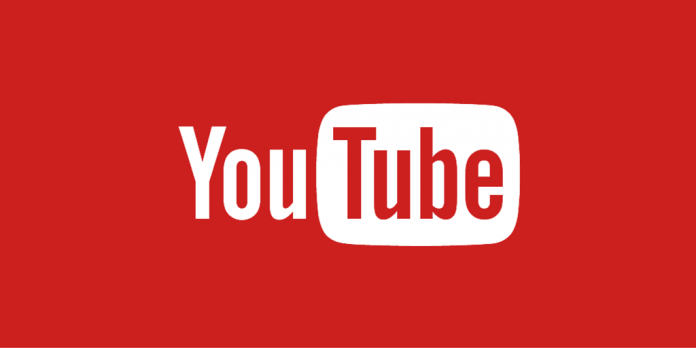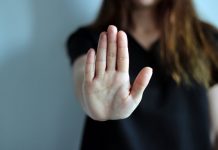This article is written by Bhumika Jain, pursuing a Diploma in Intellectual Property, Media, and Entertainment Laws from LawSikho.
Table of Contents
Introduction
Have you come across instances of copyrighted work being infringed on YouTube? You surely have. Ever wondered, what liabilities do these infringers pose, and would YouTube be dragged along for such infringement committed by its users?
With the increase in the usage of the internet, the number of cases of online copyright infringement has been on the rise more than ever. The infringement that takes place in the “virtual” world has widespread consequences and monitoring it is quite a task. To understand it better, have a look at the statistics around the globe to understand the amount of content being uploaded to YouTube every single minute, every single day!
Approximately 500 hours of videos are uploaded “every minute”, that is 720,000 hours of video uploaded “every day” to YouTube. Name a category of content you wish to see – YouTube has it all. With more than 2 billion monthly active users worldwide, India has the most active monthly YouTube users that are approximately 225 million.
Today, intermediaries such as YouTube play a vital role in our lives and have become an important source of revenue for many. While using YouTube one has to abide by its terms of policies, nevertheless we do come across instances of it being violated by its users.
So, a highly debated issue around the globe is, what is the extent of liability these intermediaries possess, when its user engages in any unlawful activity such as copyright infringement via their platform and what are the ways to balance the interest of these intermediaries, the owners of copyright and that of the public at large.
So before diving deep into our topic and understanding the liabilities and immunities these intermediaries possess when infringement takes place via their platform by its users, let us understand the basics first.
Ownership and infringement under Copyright Act
The Copyright Act, 1957 (Act) provides an “exclusive right”, upon the owner over their copyrighted work. One does not need a formal registration to acquire copyright. Copyright in a work will automatically subsist as soon as the work comes into existence, provided it’s original. To begin with, let us first understand what is the subject matter of copyright, what are the rights that exist in such work, and who is the owner of such a work.
Section 13 of the Act tells us Works in which copyright subsists i.e., original literary, dramatic, musical, artistic works, cinematographic film, and sound recording.
For example, instances such as movies, songs, web series, documentaries, blog posts, books, lyrics, choreography, stage plays, music composition, photographs, paintings, drawings, computer programs, etc will all constitute copyright in it.
Copyright is not a single right but a bundle of rights that are “exclusive” to the owner. The owner can either themself or authorize others to do certain acts concerning the Work. Section 14 of the Act specifies various rights concerning the work. To name a few, such rights are communicating the work to the public, reproducing the work, issuing copies of the work, storing it in any medium by electronic means, adaptation, translation, etc.
Lastly let us understand who is the owner of the copyrighted work, who has been bestowed with such a plethora of rights.
Section 2 (d) of The Act, describes the author of such work as;
- In the cases of literary, dramatic work – it is the person who creates the work.
- In the case of musical work – it is the composer.
- In the case of artistic work (other than a photograph) -it is the artist.
- In the case of the photograph -it is the photographer.
- In the case of cinematographic film and sound recording -it is the producer.
In most instances, the authors are the “first owner” of the work, this is subject to an exception that is when Section 17 of the Act applies. That is, if the work is commissioned by someone or if it is created in the course of employment, etc. in which instances, unless some contrary understanding is agreed between the parties, the person so commissioning, or employer becomes the first owner of the work.
To conclude, in most of the instances, the authors are the owners too, with certain exceptions.
Now that we are clear with the law and we know all the rights that exist in a copyrighted work, which vest “exclusively” with the owner, let us dive deeper into our discussion.
What constitutes copyright infringement and liability around it?
In simple words, a person not being the owner of the copyrighted work, if they use such work, without obtaining the requisite permission/ licenses from the copyright owner, constitutes an infringement. That is to say, unauthorized use of someone’s copyrighted work is called an infringement.
Section 51 of the Act specifies when copyright is infringed, Section 51 (a) (i) and(ii) deals with primary/direct and secondary liability respectively.
So, when any person without a license or in contravention of the condition of the license:
- Does anything, the exclusive right to do which is conferred upon the owner, or
- Permits for profit any place to be used for communication of the work to the public, unless he was not aware or had no reasonable ground for believing that such communication to the public would be an infringement of copyright.
They can be held liable for infringement under Section 51 of the Act.
So, when we come across instances where intermediaries such as YouTube, we find its users upload songs/movies/web series or any such Work (as mentioned above) without authorization/ licenses from the owner, in all such instances the person commits an act of infringement. For example, say a content creator uses copyrighted music in his video, without taking approvals/licenses from the owner, then he has committed an act of infringement.
Also, the Act does provide some instances wherein certain acts are held not to constitute an infringement. There is a provision such as de-minimis usage (which means the law does not concern itself with trifles). However, these are subject to the facts and circumstances of each case and the same needs to be established in the court of law.
The legal remedy that the copyright owner possesses against such infringers, is that he/she can institute a civil/criminal proceeding, as provided under the Act. Civil remedies include injunction, damages, or accounts of profit. Criminal remedies include imprisonment of the accused or imposition of a fine or both.
Let us now discuss what would be the liabilities of the intermediaries, when an infringement is committed by its users/subscribers through their platforms.
What is an intermediary?
The term intermediary is not defined under the Copyright Act, 1957, however, a reference can be made to Section 2 (w) of the Information Technology Act 2000 (IT Act).
Intermediary concerning any particular electronic records, means any person who on behalf of another person receives, stores or transmits that record or provides any service concerning that record. The definition provided under the IT Act is very wide and covers a diverse set of service providers such as ISP, search engines, web hosting services providers, online payment sites, online marketplace etc.
These intermediaries such as YouTube are subjected to various conditions which they ought to follow, to invoke the “safe harbour provision”.
The safe harbour provision
“Safe harbour provision” is a well-recognized concept and prevalent around the globe, by which intermediaries can protect themselves, subject to fulfilment of various conditions, against legal liabilities that arise if any unlawful content is posted on their platform by their users/subscribers. It’s not a blanket provision that immunes the intermediaries from the liability in cases of infringement, however, it provides defence for immunity.
Under the Indian Law, the “safe harbour provision” for intermediaries is provided under Section 79 of the Information Technology Act, 2000(IT Act) (as amended by the IT (amended) Act, 2008). Similar provisions exist in The United States Statute Digital Millennium Copyright Act and also exist around the globe.
The “safe harbour provision” for the intermediaries provided under Section 79 of The IT Act, 2000 (as amended by the IT (Amended) Act, 2008) immunes the intermediaries from the liability for any third-party information, data, communication link made available or hosted by it, subject to fulfilment of various conditions such as:
- Where the function of intermediary was “limited” to providing access to a communication system over which information made available by third parties is transmitted or temporarily stored or hosted; or
- Where the intermediary does not initiate the transmission, select the receiver of the transmission, and select or modify the information contained in the transmission.
Moreover, the exemption will apply only if:
- The intermediary observes due diligence while discharging his duties under this act and also observes such other guidelines as the Central Government may prescribe.
- The intermediary has not conspired or abetted or aided or induced, whether by threats or promise or authorize in the commission of the unlawful act.
- Upon receiving actual knowledge, or on being notified by the appropriate Government or its agency that any information, data, or communication link residing in or connected to a computer resource, controlled by the intermediary is being used to commit the unlawful act, the intermediary expeditiously removes or disable access to that material on that resource without vitiating the evidence in any manner.
From a broader perspective, it’s a much-required relief, because if intermediaries were to be held liable for every unlawful act committed by its users, it will eventually lead to the non-functioning of these intermediaries.
As we can infer from the above, cases in which, the intermediaries are found hand in glove with one who is responsible for such an infringement or instances when they fail to carry out proper due diligence or fail to act upon having any such knowledge of infringement or upon receiving orders from government or its agency fails to expeditiously remove or disable access to that material on that resource or where the intermediary abets, aids or induces directly/indirectly in the commission of the unlawful act that is when the conditions as laid down by the law are not met, there is no ground of immunity that can be invoked by these intermediaries and hence they can be held liable for infringement.
Also as stated above, Intermediaries have to exercise sufficient Due-Diligence to be compliant with Section 79 of the IT Act. According to Information Technology (Intermediary Guidelines and Digital Media Ethics Code) Rules, 2021, Part II specifies “Due Diligence” that intermediaries must observe and also provide for the “Grievance Redressal Mechanism”.
YouTube has a comprehensive policy, community guidelines in place. Its users by accepting the terms of services are obligated to abide by it. Also, YouTube does take copyright infringement seriously in its attempt to eliminate the infringement happening on its platform, various copyright management tools have been set by YouTube such as Copyright takedown notice, Copyright Match Tool, Copyright Verification Program, Issuing Copyright Strikes, Content ID.
One such tool is Content ID, which lets the owner (the right holder) monetize, track or block the video in question. By choosing to monetize through Content ID, the right holder, in turn, earns revenue from ads run against the claimed video. Using the Content ID tool YouTube has paid more than $ 3 Billion to Copyright Holders.
Also, very often we do find content that includes work of others used by creators, without obtaining requisite approvals being pulled down by YouTube, this is either because the owner issues a takedown notice, or where the algorithms of YouTube detect an infringed work and accordingly owner of the copyrighted work is intimated of the same. The consequence of this is that on repetition of such activity one will find their account being blocked or even permanently deleted.
What are the liabilities of intermediaries?
As mentioned above, while there exists a “safe harbour provision” under Section 79 of the IT Act, it is not a blanket provision for the intermediaries and subject to fulfilment of the various conditions as laid under the acts, the intermediary can invoke such provision.
Also, relevant acts one should read together to understand the intermediary’s liabilities and immunities the intermediaries possess are Section 79, 81 of The Information Technology Act 2000, The Information Technology (Intermediary Guidelines and Digital Media Ethics Code) Rules, 2021, Section 51, 52 and 14 of Copyright Act, 1957, Copyright Rules, 2013 and other general laws of the country.
It is also relevant to interpret Section 81 of the IT Act, on prima facie reading the provision appears such that immunity provided to the intermediaries is restricted in cases of copyright and patent infringement. However, as held under My space Inc vs Super Cassettes Industries Ltd, Sections 79 and 81 of the IT Act and Section 51 of the Copyright Act are to be read harmoniously which states that Section 81 does not preclude the defence of safe harbour for an intermediary.
Further, there are various other Sections of the Copyright Act, 1957 such as Section 51, Section 52 (1) (b) and (c), Section 14 and Information Technology (Intermediary Guidelines and Digital Media Ethics Code) Rules, 2021 amongst others that requires interpretation to understand the overall liability the intermediaries possess.
For example, where an intermediary is dragged for infringement under Section 51 (a) (ii) of the Act, which is providing for profit a “place” to be used for communication of infringed work, here an exception is carved out under the act, that is, one can claim lack of knowledge/reason to believe that such communication was an infringement of copyright, to exempt itself from secondary liability, however here the issue of the determining the “actual knowledge” as opposed to “general awareness” needs to be proved, then there is Section 52 of the Act which talks about the transient or incidental storage and such there are various other provisions of the IT Act and Copyright Act which needs interpretation and is the subject matter of trial, which needs to be proved in the court of law before fastening any liability upon intermediaries.
Therefore, despite the existence of e “safe harbour provision”, the liabilities that will be attributed to the intermediaries are subject to fulfilment of the various conditions by such intermediaries as laid down in respect to all the acts and upon the facts and circumstances of each case.
Some prominent cases on intermediaries
My Space Inc. vs Super Cassettes Industries Ltd.
The suit was brought by Super Cassettes Industries Ltd (T-series) against Myspace, which is an ISP based in the USA, for infringement of its work. This particular judgment was in response to an appeal filed by Myspace, against the injunction order against it by which the order was reversed by the Division Bench of Delhi High Court and certain important decisions were laid down such as safe harbour provision being available to intermediaries when third party uploads infringing content and same not being struck by Section 81 of IT Act, having “actual knowledge” as opposed to “general awareness” of infringement and casting obligations on owners to point out the actual content being infringed and fulfilment of conditions as specified under Section 79 the IT Act before fastening the intermediaries with liabilities etc.
A recent win for “YouTube”
European Court of Justice (ECJ) in its recent ruling favoured YouTube and held that YouTube and other such intermediaries cannot be made liable for copyright infringement unless the intermediary had specific knowledge that protected content is available illegally on its platform and refrains from expeditiously deleting it or blocking access to it.
Conclusion
It is too farfetched to assume that all the content we see on these intermediaries such as YouTube should be reviewed or scrutinized. Given the magnitude and size of the content uploaded every single minute, it does not only sound humanly impossible, but if every content we see were to be reviewed it will surely have other repercussions such as the curtailment of freedom of speech and expression, etc. and holding intermediaries directly liable, for the user’s unlawful activity, where in turn the intermediaries were compliant with all the laws in the country and have carried out the due diligence as required, will only lead to non-functioning of these intermediaries.
Intermediaries such as YouTube can invoke the “Safe Harbour Provision” to seek immunity in instances where they are compliant with all the laws in the country such as Section 79 of the IT Act read along with the Copyright Act and safeguard itself from direct liability, in cases where their users have committed an unlawful act.
Having said that, the appropriate legal proceeding should be initiated against the one responsible for infringement to curb such activities and to balance the interest of the owners there shall exist a rigid mechanism in place, to ensure the owners are not deprived of their economic rights and that these intermediaries do not become the breeding ground for the infringed copyrighted work.
Reference
- http://164.100.69.66/jupload/dhc/SRB/judgement/24-12-2016/SRB23122016FAOOS5402011.pdf
- https://backlinko.com/youtube-users
- http://nopr.niscair.res.in/bitstream/123456789/7197/4/JIPR%2015%281%29%2035-45.pdf
- https://www.scconline.com/blog/post/2021/06/25/youtube-copyright-battle/
- https://www.tubefilter.com/2018/11/07/youtube-payouts-content-id/
- https://www.youtube.com/howyoutubeworks/policies/copyright/#overview
Students of Lawsikho courses regularly produce writing assignments and work on practical exercises as a part of their coursework and develop themselves in real-life practical skills.
LawSikho has created a telegram group for exchanging legal knowledge, referrals, and various opportunities. You can click on this link and join:













